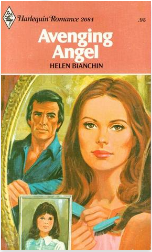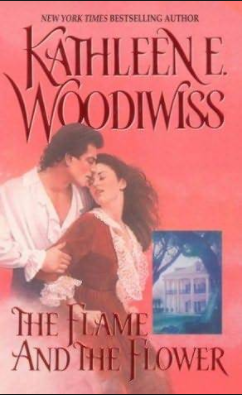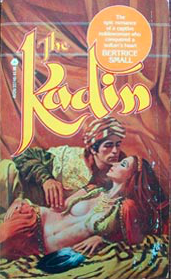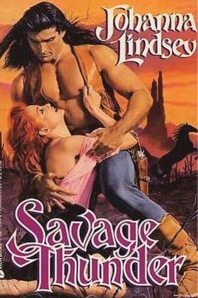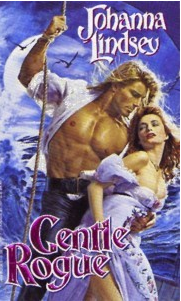Representations of Masculinity: Romance Book Covers from the 70s to Present
By Jen Chen and Jessica Zhang (2017)
Introduction: The Changing Faces of the Romance Novel Hero
According to statistics from 2013, the romance novel industry had a gross revenue of $1.08 billion, accounting for a startling 34% of the total U.S. fiction market (MyRWA). As the industry continues to grow and advance, cover designs are critical in distinguishing each piece of work from its competitions, both in-house and across publishers (Joe).The romance novel industry is also unique in that 84% of its readers are female (MyRWA). Consequently, the depiction of the romance novel hero is vital in capturing the attentions of the target (predominantly female) audience. As put by Erika Tsang, Editorial Director at Avon Publications (HarperCollin’s romance imprint), the romance novel cover needs to meet a certain level of expectation of the readers and that it is important to select the “best-looking” and the “masculine, buff guy” on the cover (Mikula). It follows that these portrayals of masculinity reflect the romance industry’s, from publishers’ to authors’ to readers’, view on what the romance hero should look like. [JC, JZ]
In this paper, we will examine the past and present of male representation on romance novel covers and suggest that the changing trends of masculinity on book covers from the 1970s to the present day can be seen as an adaptation to the changing views of masculinity and sexuality in the romance novel industry as a whole. This paper will be divided into two parts: the first will be historical background and various case studies of covers from the 1970s until now and the second will be an overview of the contemporary romance cover design process. Insights into the portrayal of masculinity in advertising will be provided by a number of scholarly articles, editorials and blog pieces. We also had the great fortune of interviewing several publishers and authors, and their testimonies are included in the latter half of this paper to highlight both individual and societal perspectives on representations of masculinity in contemporary romance images. There will also be a conclusion at the end to tie both parts together. [JC, JZ]
From Bodice Ripper to Contemporary Genre Romance
While the core of the genre romance has stayed consistent over the decades in a sense that each story centers around the romance between the principal characters and that each story offers an emotionally satisfying conclusion, the specific romantic and sexual dynamics between the hero and the heroine have changed dramatically between the start of the genre romance to the present day. Roots of the contemporary romance novel can be traced back to the 1970s with the publication of The Flame and the Flower by Kathleen E. Woodiwiss. With its graphic sexual encounters and travels through exotic locations, the novel was also notably the first single-title romance to be published as a paperback original and received all the privileges normally reserved for proven best sellers. The widespread success of The Flame and the Flower led to a subsequent revolution in the genre–the appearance of the “bodice ripper”. In these “bodice ripper” stories, the sexual encounters between the hero and the heroine were often resulted from the heroes seducing (and sometimes raping) the heroines, with the idea that the hero had awakened the sexual side of the heroine, who was otherwise pure and virginal. According to Sabrina Jeffries, New York Times best selling author, the prominence of the bodice ripper trope was resulted partially from the fact that it was not socially acceptable for women to embody or display sexual desires at the time that these books were published–and thus the stories needed to happen in a way that their sexual activities were forced by the heroes. [JC, JZ]
Despite the origination and presence of these “bodice rippers” that featured graphic sexual encounters between the hero and the heroine, the romance novel industry back in the 1970s was still dominated by Harlequin’s “sweet romance” stories. In many of those romantic yet sexually chaste 1970s novels, marriage with the hero would be the heroine’s ultimate goal and despite the passion that is elicited between the hero and the heroine, explicit sexual encounters were rarely described on the pages (although some may be implied, especially at the end of novels) (Markert, 69-93). Starting from late 1970s, there has been an increasing focus on the sexualization of the romance between the hero and the heroine. A scholarly article by John Markert in 1985 identified both changing social awareness in concepts such as premarital sexual activities or divorce as well as structural changes in the publishing industry in the late 1970s – such as having more female editors in publishing houses – as reasons for increasingly sexually liberated content seen in romance novels. Among other things, Avon’s chain of sensual romance novels published in the late 1970s had a significant impact on liberating the romance novel industry in the 1980s and 1990s (Markert, 69-93). [JC]
Consistent with the observations presented in the paragraphs above, Kelly Faircloth’s 2016 article presented evidences to show that the sexual dynamic within the stories have gone through tremendous changes (Faircloth). The article said that nearly a decade after Rosemary Rogers’ Sweet Savage Love–an iconic bodice ripper–was published, a 1987 study actually found that romance readers wanted to see more consensual sex in the stories where the heroine wanted it for herself (i.e.: no rape). In addition to the rise of consensual sex in the romance stories, the notion of purity and virginity of the heroine was also challenged. The article noted that books in the 1990s started to have heroines that weren’t virgins–Then Came You, a popular romance novel by Lisa Kleypas (1993) actually had a heroine who was a mother of a child born out of wedlock. All such examples show that the romance novel industry has gone through significant transformations in the ways in which sexual desires (especially of females) are conceptualized. In the following section, we will use various examples of book covers throughout the decades to show that this same trend can be seen in the ways in which the male models are depicted on the covers. [JC]
Analysis of Book Covers from 1970s to 2000s
Sweet Harlequins
Consistent with the content of the “sweet Harlequins” where the romance between the hero and the heroine was chaste (i.e.: no or rare mentions of sexual encounters), the “sweet Harlequin” covers in the 1970s also presented the principal characters in ways that would not strike a sexual response from the readers. On these covers, the hero and the heroine were fully clothed and were not found in any compromising positions, oftentimes they might not even have any physical contact with each other. The cover of Isle of the Golden Drum (Rebecca Stratton, 1975) showed a female character from shoulder up (i.e.: no chest was featured on the page) and a male character standing behind her with his hands in his pockets (i.e.: not touching her). The cover of Avenging Angel (Helen Bianchin, 1977) had a similar spatial arrangement between the hero and the heroine where the hero stood behind the heroine but the two had no direct physical contact. [JC]
Figure 1: Isle of the Golden Drum – Rebecca Stratton, 1975
Figure 2: Avenging Angel – Helen Bianchin, 1977
Male as Complement
While the character of male lead was tyrannical in many novels’ content back in the 1970s and early 1980s, the romance hero was rarely shown on the cover without the heroine beside him. More often than not, the woman would be the focus of the image with the man as a “complement”. For example, the male love interest would be embracing the female lead from behind, gazing at her or kissing with his eyes directed at her–the heroine would often be facing the “reader,” presenting a full view of her face. In rare cases, more often in large-scale historicals of the period, is the male lead seen dominating the heroine (The Festering Blurb:Bursting Open w/Pungent Prose). [JZ]
Some well-known examples of covers that embodied “male as a complement” include the cover of The Kadin (Bertrice Small, 1978) and the cover of The Flame and the Flower (Kathleen Woodiwiss, 1972). In both examples the females were the focus on the covers and it was these females’ sexualities that were being showcased on these covers (especially on this cover of The Kadin where there was a significant amount of her skin showing) and the men would hold the women from behind. It can be seen that the angle of the camera was not really focused on the hero in either case and that the hero was on the cover merely to complement the heroine. [JC]
This suggests that although the “bodice ripper” genre was growing in popularity, the romance hero derived his masculinity in part from his distance, both emotional and physical, with the heroine (and the reader) rather than the sexual tension between the leads. The trend of forced seduction in that period further highlights this odd juxtaposition as according to the sources we have cited earlier, the society in that time period discouraged the outright sexual urges of female leads. In effect, the male leads would be responsible for introducing sexual elements while maintaining emotional distance from the heroines. This would often be the central conflict in the novels as the heroine attempts to decipher the actions and attitudes of the mysterious distanced male lead. Consequently, the romance hero is not the spotlight of the book covers, but rather a complement to the often much more relatable heroine—his masculinity is represented by his attachment to the female lead rather than pure passion towards her (Goodreads) (Amazon).[JZ]
Figure 3: The Flame and the Flower – Kathleen Woodiwiss, 1972
Figure 4: The Kadin – Bertrice Small, 1978
Clinch Covers
While many of the romance novel covers in the 1970s did not place a large emphasis on the masculinity and sexuality of the hero, the 1980s and 1990s was a time period that marked the start of the “masculine, buff guy on the cover.” An iconic male model for romance book covers, Fabio Lanzoni was depicted on more than 400 romance novel covers during the 1980s and the 1990s, including classics such as Johanna Lindsey’s Gentle Rogue and Savage Thunder. In some ways, Fabio represented exactly the stereotype that the typical romance reader may associate the romance hero with – “hulking, muscle-bound man with his billowing white shirt open to the waist but still tucked into buff-colored breeches” (Rodale). Comparing to many of the 1970s novels where the hero and the heroine on the covers were shown in a chaste, uncompromising posture, the 1980s was also a period where “clinch covers” – where the hero and heroine on the cover engage in a sensual embrace – became increasingly popular (Kriel). [JC]
Looking at The Popular 80s Harlequin List, for example, it is easily seen that nearly every one of the 1980s romance novel covers was a “clinch cover”. Taking one of Fabio’s covers, Savage Thunder (Johanna Lindsey, 1989), for example, we can see how the masculinity featured on the book cover continues to portray what we as an audience expect the romance hero to look like in even the contemporary romance novels. On this cover of Savage Thunder, Fabio was shown without a shirt, revealing the masculinity of his chest. He was also holding the heroine in a tight embrace, fully emphasizing his dominant position in relation to the heroine (especially since the heroine was clinging onto him from the ground). Another classic of the genre was Johanna Lindsey’s 1990 novel, Gentle Rogue, where Fabio was again featured in a position of dominance, showing off his muscles and holding the heroine tightly. Not only was the 1980s the first period when the male model started taking off or unbuttoning his shirt on book covers, it was also a period in which the sexual dominance of the hero (in relation to the heroine) was an emphasis on romance novel covers (Rodale). [JC]
Figure 5: Savage Thunder – Johanna Lindsey, 1989
Figure 6: Gentle Rogue – Johanna Lindsey, 1990
While the trend of sexual liberation on book covers continued into the 1990s, as clinch covers continued to be a trend in the 1990s romance novel book covers and Fabio continued to be the iconic male cover model well into the 1990s, it is worth mentioning that the sense of masculinity back in the 1980s and 1990s was shown not just in physicality but also through representation of wealth. From the Harlequin List of 1990s covers we can see that men were shown almost always with women (as opposed to solo hero covers that we sometimes see today), with kempt hair, suit and tie or collared shirt. It seems obvious that these men were wealthy and were of a higher social status than their respective heroines. In fact, Fabio, with his rugged and wild sense of appearance, seemed like the odd one out when analyzing masculinity in the 1980s and 1990s as a whole. Yet it was Fabio’s style who dominated the romance book covers in the early 21st century (Harlequin). [JC]
Moving towards the 2000s and present day, men featured on book covers have a steadily more rugged appearance, following trends lead by Fabio. Likewise, the images themselves are more “realistic” in that they are clearly photographs rather than the former “drawing” appearances of past decades (Goodreads). Moreover, the romantic hero became more of a central focus on book covers as the image content grew increasingly “sensual”. Representations of male leads started taking over their shirts and showing off their dominance, causing the use of female models to become more of an accessory or prop for the romance hero. Notably, in present day, more male models are appearing solo on novel covers, becoming the central marketing point. Occasionally, these male leads even have their head cropped out and the focus is solely on their physical statue. (They often have their shirt completely off or at least open, showcasing impressive ab muscles.) [JZ]
Solo Males
Some examples of the solo male covers include the cover of Forever a Hero (Linda Lael Miller, 2017) and Million Dollar Cowboy (Lori Wilde, 2017). On both of these covers the men were shown without the heroines and the camera focused on their specific features. While these heroes on the covers come across differently from cover to cover (for example the cover of Forever a Hero focused on the muscles of the hero whereas the cover of Million Dollar Cowboy placed an emphasis on the man’s facial appearance including his smile), the basic idea where the man is the center of what the readers look for remains consistent amongst contemporary genre romance. [JC]
Figure 7: Million Dollar Cowboy – Lori Wilde, 2017
Figure 8: Forever a Hero – Linda Lael Miller, 2017
Headless Torsos
Another present trend is the “headless torso” covers. The examples we include here are The Risk (Skye Jordan, 2015) and Enraptured (Elisabeth Naughton, 2012). This is an expansion of the solo male covers described above and the clear focus here is on the male models’ torsos, specifically the abdominal muscles. The defining features of the hero’s face are either cropped out (The Risk) or obstructed in some other way (the author’s name covers the hero’s face in Enraptured). These headless torsos often appear on the covers of paranormal romance and romantic suspense where it is extremely unusual for this trend to appear on historical romances. This difference is simply due to the nature of different audiences. An example of a historical romance with a “headless torso” cover is Katharine Ashe’s The Earl. [JZ]
Figure 9: The Risk – Skye Jordan, 2015
Figure 10: Enraptured – Elisabeth Naughton, 2012
This follows the general trend in depictions of masculinity in advertising where these idealized images “represent an ‘almost necessarily edited version of life’” with the help of modern technology (e.g. airbrushing techniques) (Zayer).As a result, the standards of the romance hero, appearance wise, have reached a level of virtually super-human. No matter what job the male lead may have in the novel, they are constantly shown as being “in shape” and “muscular,” giving the character connections to strength as well as attractiveness in today’s society. Interestingly enough, this increasing focus on the male’s physique can be interpreted anthropologically–”Once men could fairly well control their destiny through providing resources to women, but now that the female is obliged to earn a living, he himself becomes the resource. He becomes his own product…Now he has to appear attractive in a way that the female had to be” (Zayer). Furthermore, though the male leads no longer have to be evidently wealthy, they have to exude confidence and desire. More information regarding the contemporary romance novel is in the following section. [JZ]
The Contemporary Publication Process
From Idea to Actualization
The process of designing the perfect romance novel cover can take anywhere from days to weeks depending on the specific cover, according to Sarah Lyons, Editor from Riptide Publishing. Sometimes the cover involves a photoshoot done by the publishing house itself, as often is the case in large publishing houses with sufficient capital, and other times it is a pick-and-choose on a stock photo site as often is the case with smaller or independent publishers, Lyons said. According to Erika Tsang, Editorial Director of Avon Publications, the cover design process starts with the editor consulting with the author about what the hero should look like. Tsang said that the illustrator then “takes this information and provides a portfolio of models that fit the description.” The author would usually make the final call regarding who would best represent the hero, Tsang said. Although the process is similar across publishers, several authors, including Codi Gary, a bestselling author of contemporary romance novels, have noted that the author generally has much more input in the final cover when they work with smaller or indie publishing houses. [JC]
The selection of male models reflects a combination of researching popular trends in the romance novel industry as well as understanding what model appearance would best match the character setting as well as the tone of the story, said Cynthia Sax, USA Today bestselling author. According to Sax, she would conduct research on Amazon’s top selling books in her niche of the romance novel industry and find common elements in these covers. It is also very important to consider what the hero should look like based on the content of the book itself, several authors noted. “If I write a sweet, small town romance, I want a couple or a scene,” Gary said, “I’m not going to put a shirtless man on my cover.” Gary emphasized that especially since readers may not follow through with an author’s series if they feel that the cover of the first book has been misleading, it is important for the cover to match the reader’s’ expectations. Similarly, Sax remarks that almost all covers in her cyborg romance niche feature a bare-chested man. “Why? Because readers want to be reassured the hero looks like a man, not a toaster.” All the authors and editors interviewed suggested that the appearance of the male lead on the cover is heavily dependent on what the writers and the publishers are trying to get across. [JC, JZ]
In terms of what the reader expects the typical romance novel hero to look like, multiple authors and publishers have agreed that despite the increasing diversity in the contents of romance novels, the industry’s definition of the hero continues to be the “alpha male.” “The tall, dark, handsome (or scarred!) alpha male is still the number one seller,” Sax said. Since the novels are fantasy, Sax also notes that the portrayals of the romance hero are often “unusually physically fit” and the chests are often hairless (allowing easy additions of tattoos and other details, according to Sax). In addition to the hero’s physique, Gary said that the profession of the hero (which is usually seen in the hero’s uniform) also conveys a sense of masculinity. “Professions like firemen, cops, FBI agents, mechanics, cowboys, and bikers have become staples in the contemporary genre that always make me think ‘sexy alpha male’, Gary said. [JC, JZ]
Not only do the models on the covers need to look like what we physically imagine to be the alpha male, the man that we portray on the cover also needs to reflect certain “alpha” traits, some authors said. Particularly, both Sax and Gary mentioned “confidence” as an important trait for the alpha male. “Many readers fantasize about a man who will instinctively know what she wants and gives it to her, who will protect her, who will make the right decisions for her (because we all make a gazillion decisions in our real lives), who is difficult to kill (because we deal with enough death in our real lives),” Sax said. At the same time, these males are often not perfect. “Perfect is boring.” Sax said. She said that these male leads often have their own issues and failures as well as pain in their past. She remarked that scars are a big seller because they represent a “man who has been hurt yet survived.” After all, as Gary put it perfectly, “romance novels are about transporting the average reader into a new world, a new life. It’s exciting, fun and different.” It is interesting that some interviewees also believe that the standards of masculinity have not changed across the decades. “We all appreciate good looking men,” Tsang said. [JC, JZ]
A Glimpse into the Male Modeling Industry
While the days of Fabio are over, the romance cover male model industry continues to play an important role in the production and marketing of romance novels. Several authors have shared in their interviews that because the hero portrayed on the cover needs to resemble the hero in the book in important ways, it can be difficult to find the right model, especially given the occupational choices of the male lead. “I write a lot of military heroes and it is so frustrating to have stock photos featuring male models with a funky haircut, and a beard as my only choices,” Gary said. Although sometimes it is also possible to change certain parts of the hero’s appearance after the photo shoot, Sax said. For example, she told us in an interview that for one of her book covers the cover artist gave the hero a different hair color from the model himself, and other times tattoos and shadings were added into the cover to make it more unique. [JC, JZ]
Some models specialize in the romance novel industry and have capitalized in advancements in social media and technology. Once a fitness model, Jimmy Thomas, hosts his own full-service stock image website, Romance Novel Covers, and estimates that he has been on thousands of covers as a result. Another model, Pepe Toth has benefited from his role as the model of Daemon Black, a space alien from the New York Times best-selling author Jennifer L. Armentrout’s Lux series, through social media. He posts book signings through his Twitter account and reads excerpts on Youtube. When the publishing house considered dropping him as the male model of Daemon, the fans revolted and he retained the position. Numerous other models use social media and technology to establish fan bases and increase fame (Holson). [JZ]
Independent Publishing and Covers
Unlike the cover shoots large publishing houses are able to host, the main source of book cover material for independent and small-scale publishing stems from stock photo collections. As Lyons remarked: “It’s [cover shoot] a lot of capital and a lot of money for something when you can (hopefully) find a stock photo for under $50.” While stock photo collections are a great source of cheap covers, there is the chance that one photoshoot becomes extremely popular and the model subject subsequently appears on covers across the industry which can be frustrating. Lyons also noted a lack of diversity in the models available on these stock photo sites–the non-white models in poses and clothing that work for romance novels are consequently overused. It is not uncommon to scour through the photo collections for hours to find the best fit, Lyons said. [JZ]
While the flexibility of finding the ‘right’ model subject is more restricted by budgets in self-publishing, authors who do self-publish have more freedom over the entire process, some authors said. Sax shared that while the publisher controls most of the cover process at publishing houses (including the choice of a cover artist), in self-publishing, she is able to choose her cover artist—one who is known for a certain style Sax wanted to associate with her novels. She has control over deciding what the best style is for her target market, and she is able to discuss with the cover artist to tweak or change the cover until she is satisfied with the result. In some cases, the cover artist is able to make significant changes to stock photos (e.g. change the model’s hair completely). “Having a one-of-a-kind cover is important so the original photo is often merely used as a base,” Sax said. [JZ]
Conclusion
From both the case studies of classic romance novels in the past several decades and interviews with industry personnel about the contemporary book cover design process, it can be said that the representation of the masculinity on romance novel covers in many ways reflect what the romance novel readers want to see in a romance hero. While the “alpha male” has been a consistent stereotype of the romance hero since the onset of the contemporary romance novels in the 1970s, the specifics of what the “alpha male” should look like or should be allowed to look like has changed over the past several decades. From “sweet romance” to the days of Fabio to the “headless” ab-ridden torsos that we see on covers today, the representation of masculinity on romance novel covers has gone through tremendous changes, just like the contents of the stories themselves. [JC]
While the “bodice ripper” was a popular way of providing the heroines with a channel to have pleasurable sexual experiences without violating certain norms and conventions back in the 1970s, in many of the more recent works, including Eloisa James’ novella Seduced by a Pirate (which has a faceless man with open buttoned shirt on the cover, by the way), the hero is clearly not the only one who desires sexual intimacy. Perhaps the increasing portrayal of the romance novel hero’s masculinity on the book cover can, in some ways, be seen as a manifestation of the romance novel industry’s acceptance of women’s agency, which includes the choice to desire positive sexual experiences. This further suggests that when covers shifted from aiming to attract the male buyers for larger stores through, as editor Sarah Lyons puts it, “buxom babes falling out of their clothes”, to attracting female readers, representations of masculinity became increasingly important in underlining what the female audience wants to see in their romance heroes, both in the novels and out. [JC, JZ]
References
“Bodice Ripper Shelf.” GoodReads. Accessed March 25, 2017.
“Classic 70’s Historical Romance Novels.” Amazon.com: Listmania! Accessed March 25, 2017.
Faircloth, Kelly. “The Sweet, Savage Revolution That Set the Romance Novel Free.” Pictorial. December 6, 2016. Accessed March 25, 2017.
Holson, Laura M. “With Romance Novels Booming, Beefcake Sells, but It Doesn’t Pay.” The New York Times. March 30, 2016. Accessed March 25, 2017.
Joe, Ryan. “Anatomy of a Cover: Romance Novels 2015-2016. “ Publishers Weekly. November 13, 2015. Accessed March 25, 2017.
Kriel, Jane. “Stepping Back: In defense of the romance novel cover.” Heroes and Heartbreakers.com. November 4, 2015. Accessed March 25, 2017.
Markert, John. Romance Publishing and the Production of Culture. Poetics 14 (1985) 69-93.
Mikula, Jeremy. “The art of the romance novel cover.” Chicago Tribune. December 24, 2015. Accessed March 25, 2017.
“Popular Harlequin 2000s Books.” GoodReads. Accessed March 25, 2017.
Radway, Janice A. “The Institutional Matrix.” In Reading the Romance: Women, Patriarchy, and Popular Literature, 2nd ed. (UNC Press, 1991 [1st ed. 1984]): 19-45.
Rodale, Maya. “What we talk about when we talk about Fabio.” The Huffington Post. April 29, 2015. Accessed March 25, 2017.
“Romance Statistics.” MyRWA. Accessed March 25, 2017.
“Romance Reading Timeline: 1970s Pt. 1.” The Festering Blurb:Bursting Open w/Pungent Prose. July 12, 2011. Accessed March 25, 2017.
Zayer, Linda Tuncay. “A Typology of Men’s Conceptualizations of Ideal Masculinity in Advertising.” Advertising & Society Review. April 08, 2010. Accessed March 25, 2017.

